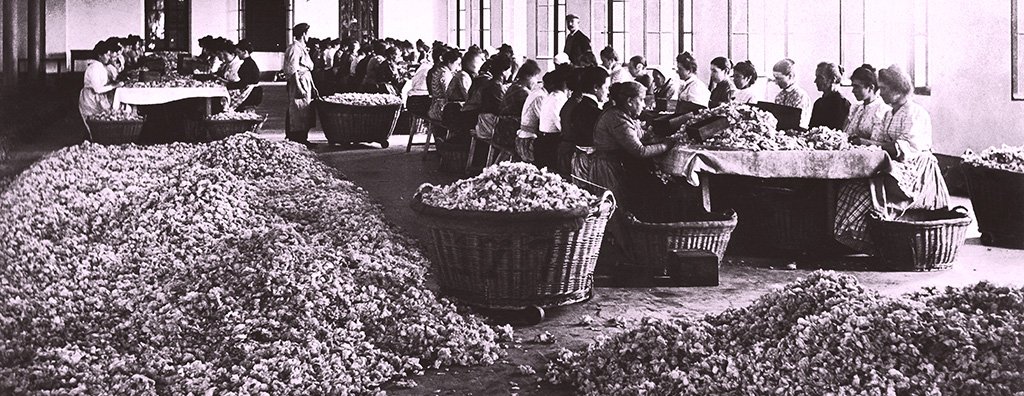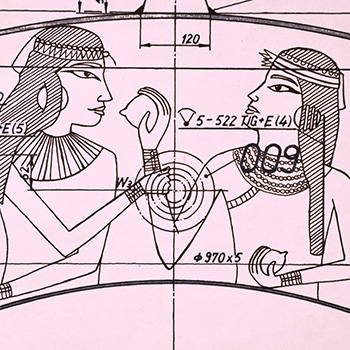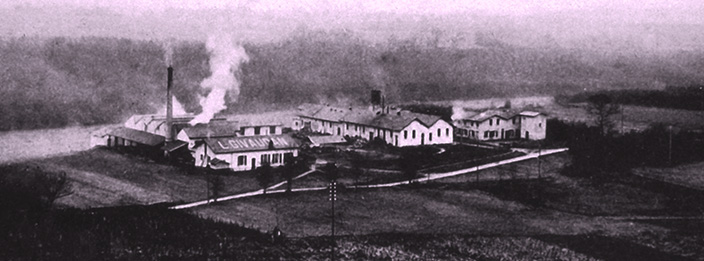Pioneers of the fragrant world

Since the very roots of our existence, we have tasted and smelled the world around us, and the way in which we ‘sense’ has become intrinsically interwoven with our most affecting memories and emotions.
Written by well-renowned perfume historian Annick Le Guérer Givaudan: a Secular History is the first chapter of ‘An Odyssey of Flavours and Fragrances’ – Givaudan’s exclusive anthology.
Through the work of esteemed writers and photographers, we trace the history of flavours and fragrances back to the earliest days of human civilisation. Along the way, this particular chapter profiles some of the most significant men and women who’ve shaped the history of Givaudan, and the industry itself.

Since the mists of antiquity
Perfume has always proved to be a priceless record of ancient civilisations. The ancient Egyptians would use resins, aromatic gums, and unguents to anoint their dead ‘perfumed ones’ (gods, essentially) in the hope they would find immortality in the afterlife.
The Egyptians also used herbs and plants to flavour their food. They practiced distillation and ‘maceration’ to extract flavours from liquids like oil and wine. Elsewhere, the Persians and Assyrians created wines flavoured with roses and figs.
An industry is born
In the middle ages, the first perfume was created in Europe. The distilling of rosemary flowers in ethyl alcohol created ‘Hungary water’, which was said to have cured the Queen of Hungary of many of her illnesses.
During the sixteenth and seventeenth centuries, people tried to protect themselves from rampant epidemics using powders, perfumed gloves, aromatic vinegars and scented masks.
Perfume became synonymous with sensuality during the Enlightenment. Perfumers created light fragrances designed to intoxicate and seduce, such as ‘L’Eau Sensuelle’ – worn by the much-maligned French Empress Marie-Antoinette.
The game changers of Grasse
The Chiris family of Grasse, France, made perfuming an international industry, beginning at the end of the eighteenth Century. Their knowledge of perfuming mixed with French colonisation and their access to high society allowed them to set up plantations and factories in places like Central Africa, the Congo, the Comoros Islands, Madagascar, Indochina, and Algeria.
The Givaudan brothers’ beginnings
On another avenue of exploration and innovation, Léon and Xavier Givaudan started out creating chemical fragrances in Zurich in 1895, long before the Givaudan and Chiris families would merge paths.

Initially in Zurich, The Givaudan brothers soon moved to Vernier. From their new one-acre site in Vernier, Switzerland, the Givaudan brothers found success in creating synthetic bases that made creating new fragrances easier for in-house perfumers.
By the 1930s, Givaudan had subsidiaries in the US, Canada and Italy, and owned factories in Switzerland, France and the US. This made them the largest producer of chemical products for the perfume and soap industries.
Travels and takeovers
After World War II, the industry went through a first consolidation, with mergers and acquisitions.
In 1958, Givaudan expanded into a new market when it took over Esrolko – a producer of synthetic food grade flavourings, based in Dübendorf, near Zurich. Since that takeover, Givaudan has always produced products for two markets: flavours and fragrances.
In 1963, the Chiris family business was taken over by Hoffmann-La Roche. At the same time, Givaudan began scouring the globe for untapped natural scents to complement their work in synthetics. This was helped by a merger with perfume house Roure – a company with strong roots in harvesting natural ingredients and great skills in creating fine fragrances.
In 2000 though, Givaudan-Roure separated from Hoffmann-La Roche and went public, heralding a new era of successful expansion. This included the acquisition of Quest International, a company whose fine fragrance business was headed by Yves de Chiris – the last scion of the Chiris family.
Today’s Givaudan
The one-acre plot in Vernier is now a key Givaudan site spanning fifty acres. The Esrolko site in Dübendorf is now the headquarters for the group’s Flavour Division, and is also home its Fragrance Division’s research and development centre.
As of 2015, Givaudan has a presence in forty countries with more than 9,500 employees people spread over eighty-eight sites worldwide.
This reality is just the actual chapter in an evolution that spans centuries, graphically brought to life in ‘An Odyssey of Flavours and Fragrances’.